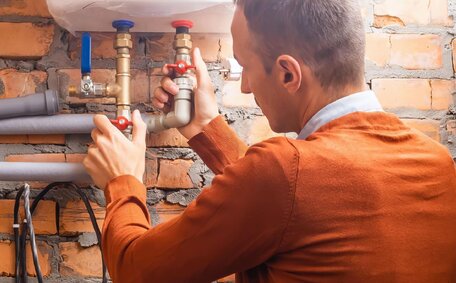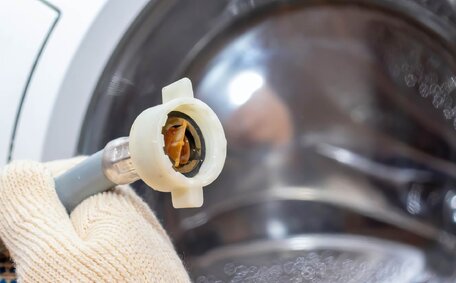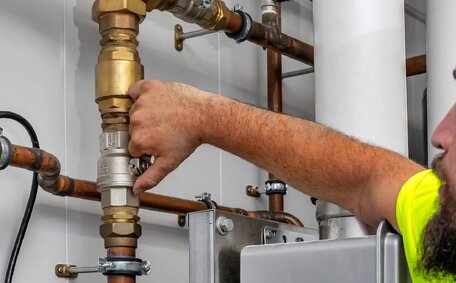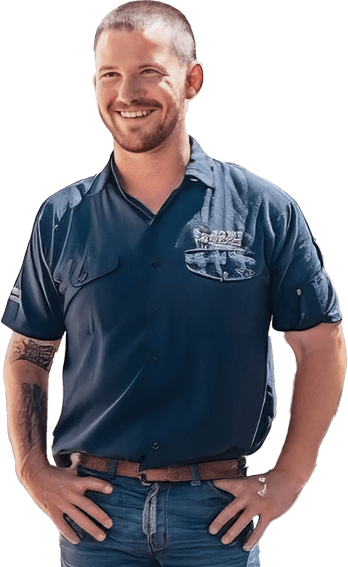What is Trenchless Pipe Relining?
Trenchless pipe relining is a modern plumbing technique that provides a less disruptive way to repair damaged pipes without the need for major excavation work. It involves inserting a flexible epoxy resin coating into the existing pipes via small access points to essentially create a 'pipe within a pipe’.
Unlike traditional pipe replacement methods that require digging trenches to access pipes, relining is done from the inside of the pipe. This means little to no destruction to floors, landscaping or other property features. It also minimises disturbance to surrounding infrastructure.
The relining process involves cleaning the old pipe, then using air pressure to invert a resin-saturated liner into the pipe. Once in position it is expanded against the pipe walls and cured using hot water, steam or UV light.
The liner material is usually a woven polyester or fibreglass sleeve coated with epoxy resin. This forms a tight-fitting, jointless and corrosion-resistant new pipe.
Key benefits of trenchless relining compared to excavation include:
- Significantly less property damage and landscaping disruption
- Much faster project completion and pipe usage downtime
- Lower risk of damage to nearby utilities
- Requires smaller access holes so less restoration work needed
- Often more cost-effective, particularly for long pipe runs
While trenchless relining has many advantages, it does have some limitations. Generally only pipes of 4 inches or larger can be relined, and severely damaged pipes may still need full replacement. Professional inspection is recommended to determine if relining is suitable.
How Does Trenchless Pipe Relining Work?
The trenchless pipe relining process involves the following key steps:
- First, the damaged pipe is thoroughly cleaned using high-pressure water jetting. This removes buildups and prepares the pipe surface.
- A specially designed liner saturated with epoxy resin is then inserted into the damaged pipe through a small access point. This is usually done by inverting the liner using compressed air or steam pressure.
- The liner is expanded tightly against the pipe walls using the pressure. It is then cured, either by circulating hot water to activate the epoxy resin, or using UV light.
- Once cured, the epoxy resin forms a hard, jointless and corrosion-resistant pipe lining. This essentially creates a 'pipe within a pipe’ fitting tightly within the old damaged one.
- The access points are then sealed off and any connections reinstated. The pipe can be returned to full operational service once the relining process is complete.
This Cured-In-Place Pipe (CIPP) relining technique provides a structural repair without the need for pipe excavation or replacement. The epoxy resin lining seals cracks and holes in the old pipe while smoothing out rough sections, restoring function and performance.
The Trenchless Pipe Relining Process Step-by-Step
Here is a step-by-step overview of the full trenchless pipe relining process:
- Initial CCTV pipe inspection - A camera probe is fed through the damaged pipe to assess condition and determine if trenchless relining is suitable. The inspection locates damage points and measures the pipe diameter.
- Access point creation - Small access openings are made at piping insertion points, typically at junctions, bends or ends. These are usually only 4-8 inches wide.
- Pipe cleaning - The pipe is thoroughly cleaned using hydro jetting to remove old buildup and prepare the surface. All debris is captured for safe disposal.
- Liner preparation - A flexible lining tube made of polyester felt is coated on-site with specially formulated two-part epoxy resin. The lining is cut to the size of the damaged pipe.
- Liner insertion - The resin-saturated liner is inserted through an access point and fed along the pipe’s length using compressed air or steam pressure.
- Liner curing - Hot water or steam is pumped inside to activate the epoxy resin and cure the lining material against the old pipe walls.
- Cool down and finishing - Once cured, the pipe is cooled then the access points sealed. Any lateral connections are reinstated.
- Post-lining CCTV inspection - A final camera inspection checks the lined pipe for a smooth finish with no defects before returning to service.
The trenchless relining process can typically be completed in just one day with minimal disturbance and downtime. The result is an epoxy 'pipe within a pipe’ restoring function for years.
Benefits of Trenchless Pipe Relining
Trenchless pipe relining provides a number of significant benefits compared to traditional pipe replacement methods:
- Minimal property damage and landscaping disruption - Only small access holes are required so surrounding infrastructure is preserved.
- Faster project completion - The process usually takes just one day with minimal downtime.
- Cost savings - Relining can save 50% or more compared to excavation and replacement.
- Longevity - Epoxy-lined pipes can last 50 years or longer with proper maintenance.
- Improved flow - The smooth new pipe surface increases water flow and drainage.
- Versatility - Most pipes 4 inches and up can be relined regardless of material.
- Reduced environmental impact - With less heavy machinery and excavation work required.
In summary, trenchless relining provides a fast, effective and minimally disruptive solution for restoring ageing or damaged pipes. The process causes little disturbance to property or landscaping compared to traditional replacement methods. It can provide many additional years of service life at a fraction of the cost of digging up and replacing pipes.
Limitations of Trenchless Pipe Relining
While trenchless relining offers many benefits, the process does have some limitations to be aware of:
- Pipe size restrictions - Generally only pipes 4 inches or larger can be relined. Smaller pipes may still require full replacement.
- Extreme pipe damage - Severely corroded or collapsed pipes may not be suitable for relining.
- Certain pipe materials - Concrete, galvanised steel, and clay pipes often cannot be relined.
- Access challenges - Very long pipe runs or pipes with minimal access points may not be feasible to reline.
- Location restrictions - Relining may not be possible in some areas with rocky soil or high groundwater levels.
- Usage downtime - While minimal, there will be some disruption to pipe usage during the 1-day relining process.
- Cost - For simpler jobs, replacement may be cheaper than relining for severely damaged pipes.
Professional inspection by a licenced plumber is recommended to determine if trenchless relining is the most suitable repair method for your situation. They can advise on all options to find the right solution.
When is Trenchless Relining the Best Option?
Trenchless relining is often the preferred option when:
- The existing pipes are still structurally sound but deteriorated. Relining can restore function to cracked, corroded or leaking pipes.
- The pipe layout cannot be changed. Relining allows repairing pipes in place.
- Excavation work would cause excessive property damage or disruption. Relining requires minimal access holes.
- Traffic flow would be heavily impacted by excavation work. Relining has less impact on roads.
- Environmental factors make digging unfeasible. Issues like high water tables or contaminated soil.
- The pipe runs under valuable landscaping. Relining avoids damage to gardens, trees etc.
- Pipes are located deep underground. Relining can repair pipes up to 75 feet down.
- Long pipe lengths need repairs. A single continuous liner can reline 100 feet or more.
- Time constraints are tight. The pipe can be back in service after just one day.
- A pipe services multiple properties. Relining avoids disruption to the wider community.
An experienced, licenced plumber can inspect your pipes and advise if trenchless relining is suitable for your situation. They can provide a detailed proposal outlining the best repair method for your property.
Questions to Ask Your Plumber About Trenchless Relining
When considering trenchless relining for your pipes, it’s important to ask your plumber some key questions to determine if it’s the right solution for you. Here are some suggested questions:
- What types of pipes can you reline - cast iron, concrete, clay, galvanised steel?
- What sizes of pipes can you accommodate? Is there a minimum or maximum diameter?
- How long has your company been performing trenchless relining?
- How many relining projects have you completed in the local area?
- What preparation work is required before relining can begin?
- What would the typical timeline be from start to finish?
- How much disruption or downtime will relining cause to my property?
- Do you provide any warranty for your relining work?
- Will you conduct follow-up inspections or maintenance after relining?
- Can you provide an estimate for my specific project? What factors affect the cost?
A reputable plumber should be happy to answer any questions you may have about the relining process and provide documentation of their experience, licences and examples of past relining work. Don’t hesitate to ask for multiple repair options as well.
For expert trenchless pipe relining in Saint Marys, Sydney, contact the professional and reliable team at Saint Marys Plumbing today. We’re happy to inspect your pipes and advise on the best repair solution for your situation.






